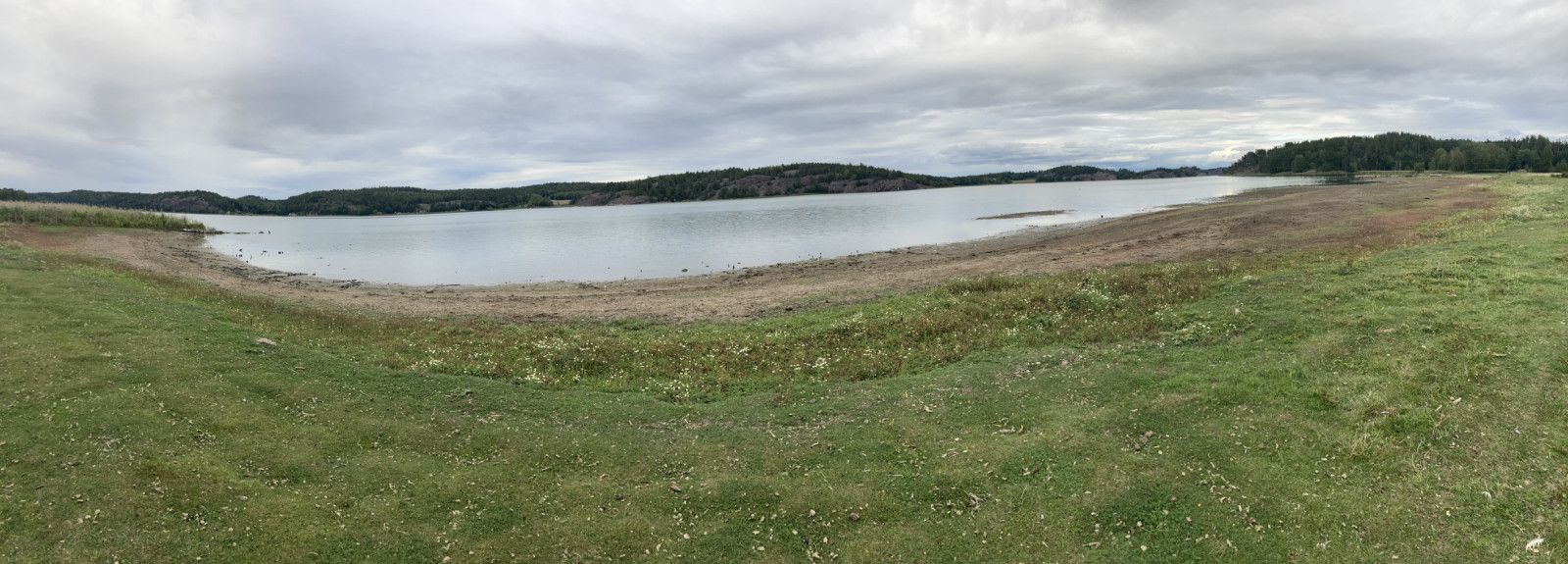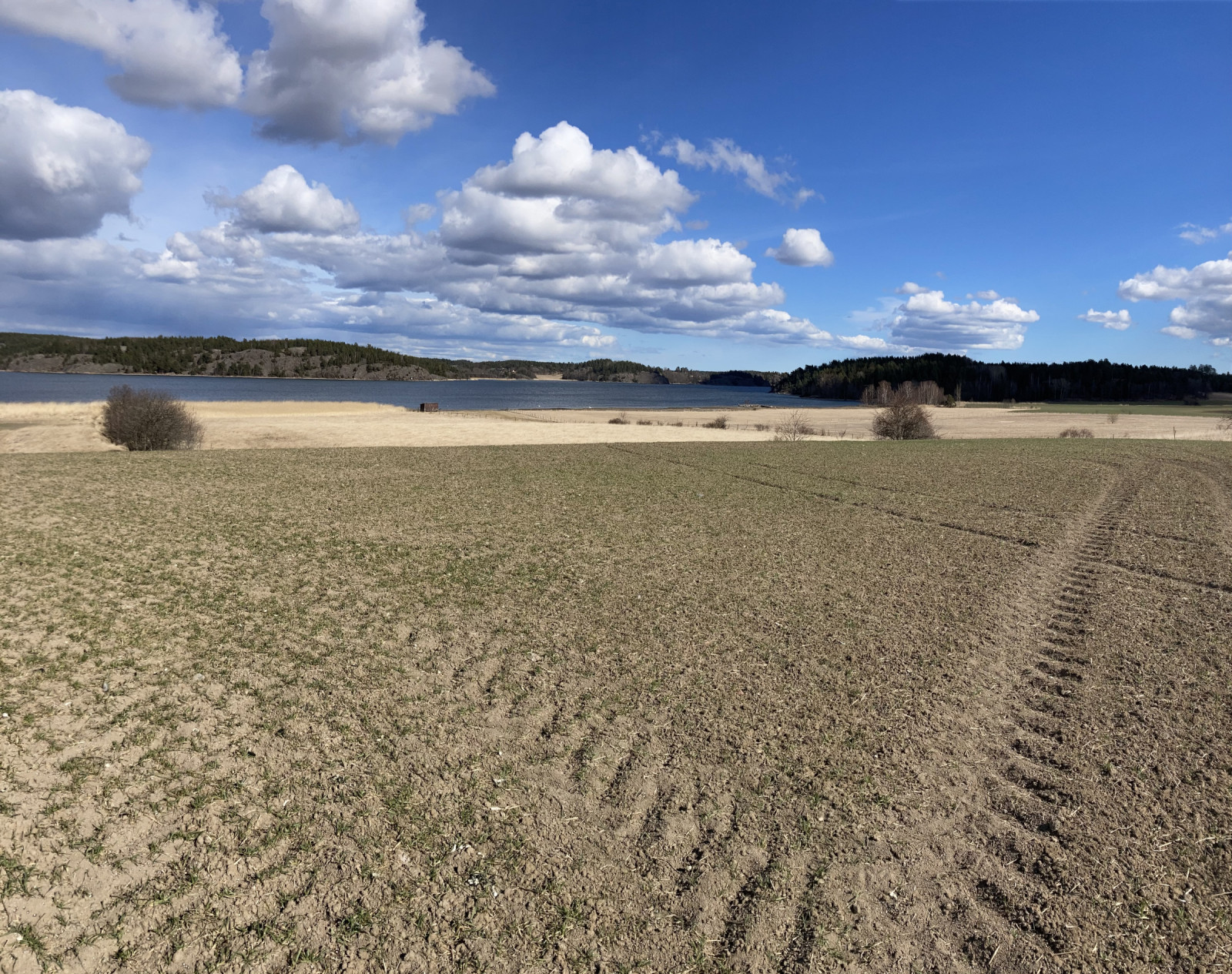Description
The birds start to arrive at Killingholmen in February when the ice starts to loose its grip on the coastal waters. Then ducks start to rest in the shallow parts of the bay; chochlačka vrkočatá (at most 100) and around 1000 potápač veľký can be found. Also the rarer winter ducks like kačica chrapka, chochlačka sivá, potápač malý, chochlačka morská and potápač prostredný. A few hundred geese and around 100 labuť spevavá feed on the areas fields and coastal meadows around march. In March the other early spring birds also arrive; škovránok poľný, holub hrivnák, škorec obyčajný and cibík chochlatý. In spring you can find fúzatka trstinová in the reed beds.
Year round jastrab krahulec, orliak morský and myšiak hôrny are the common predatory birds. But orol skalný, kaňa sivá and haja červená pass by the area. Most common passerine birds arrive in March/April. Slätbaken is a stopping point for passerine birds, which makes it common to find uncommonly early škovránik stromový and drozd trskota.
From late February and in March the owls in the area can be heard calling. sova lesná kuvičok vrabčí and výr skalný are sometimes heard. In March more geese start to arrive and not only the common bernikľa veľká and hus divá. Also hus bieločelá (at most 67) and bernikľa bielolíca (at most 100). Hus siatinná, hus tundrová and hus krátkozobá are sometimes found. Also labuť malá has been observed.
On the coastal meadows large amounts of passerine bird start to rest in the end of March and in April. ľabtuška lúčna, trasochvost biely, stehlík konôpka are the most common. Among these ľabtuška skalná is regularly seen. In the large grassy areas myšiarka močiarna can be found. On the coastal meadows kalužiačik malý, kalužiak perlavý, kalužiak červenonohý, kačica hvizdárka, kačica chripľavka, kačica lyžičiarka, kalužiak močiarny, kulík zlatý, močiarnica mekotavá and potápka chochlatá. Most common dabbling ducks are found but only kačica chrapka is numerous (at most 70). At the Torpa damm kačica chrapačka and kačica ostrochvostá have been seen, along with smaller amounts of other ducks.
In april large amounts of thrushes move past the fields and coastal meadows. Hundreds of drozd plavý, drozd červenkavý, drozd čvíkota and drozd trskota are seen. In the end of May and April most birds disappear, except for the breeders.
In May the latest passerine birds, and night active birds arrive. On the fields kaňa popolavá, sokol sťahovavý and chrapkáč poľný are found. čajka tmavá sometimes rest on the coastal meadows in May. červenák karmínový often sings here. On the meadows bernikľa bielolíca, hus divá, bernikľa veľká, kačica chripľavka, kalužiak červenonohý, cibík chochlatý, potápka chochlatá, chochlačka vrkočatá, hlaholka severská and lyska čierna breed. In the area ďateľ malý, strakoš obyčajný, kačica chrapka and labuť spevavá breed. At Storåns river mouth you can observe rybárik riečny.
During autumn Hov strandängar becomes better for birding. From July the area is a good site for wading birds such as cibík chochlatý, hvizdák veľký, kulík piesočný, kulík riečný, kalužiačik malý, močiarnica mekotavá, kulík zlatý, kalužiak sivý, kalužiak červenonohý, bojovník bahenný, kalužiak močiarny and kalužiak perlavý. These are all common, while pobrežník malý, pobrežník čiernozobý, hvizdák malý, pobrežník sivý and pobrežník krivozobý are more rare.
Other wetland birds are often found. Among the rarer birds rybárik riečny, čegrava veľkozobá, slávik modrák and beluša veľká can be noted. Large amounts of gulls, geese and terns can be found, especially hus divá which some years have been found as numerous as 3000.
Large amounts of passerine birds are found in the meadow areas. The most numerous passerine birds are stehlík obyčajný (250 at most), lastovička obyčajná (500 at most), pŕhľaviar červenkastý, skaliarik sivý, škorec obyčajný (600 at most). Later in autumn potápka malá, močiarnička tichá, stehlík horský, potápka ušatá, potápač malý and chochlačka morská are sometimes found.
Details
Access
Inre Slätbaken is located east of the town of Söderköping. Parking can be found around Hov and several other places. Click on a P in the map for directions to a parking spot.





